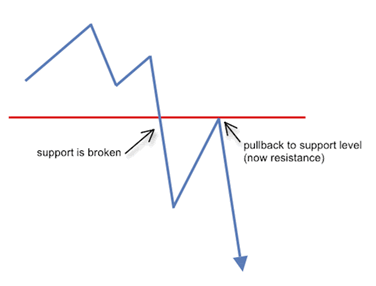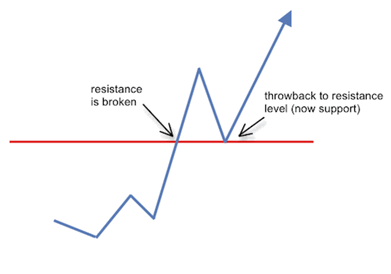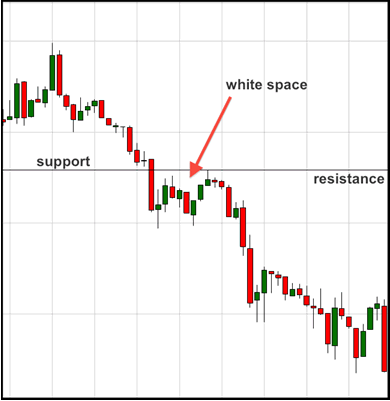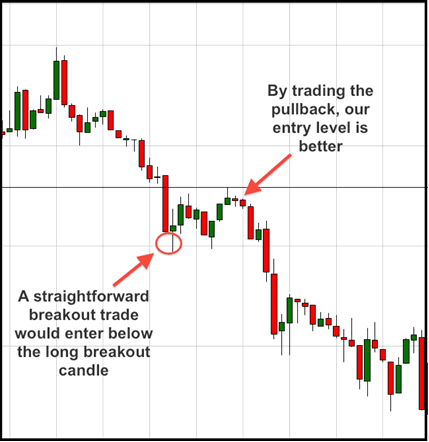 I was recently reminded of a highly effective little trading technique – one that’s too rarely discussed by traders.
I was recently reminded of a highly effective little trading technique – one that’s too rarely discussed by traders.
A safer way to trade breakouts
The common garden variety of this technique is called a throwback or a pullback.
And it can be used as a really effective way of filtering out the weaker trades in a strategy, and honing in on the strongest signals.
Here’s what they look like …


A pullback occurs when the price breaks through an area of support (usually with some momentum). It then retraces back to that support level (which has now become resistance), bounces off it, and continues in its downward direction.
A throwback is the flipside of this pattern – the price breaks through resistance, retraces to the resistance-turned-support level, and then continues upward.
The real identifying factor in a throwback or pullback is the “white space” of the retracement. This isn’t the market moving sideways – it breaks away from the support/resistance level, and then comes back to it.

By waiting for the price to bounce off this level, there will be plenty of trades where it simply doesn’t happen, so you don’t get in.
However, when the price has retraced and bounced off this important level, it makes that key support/resistance line far more significant, and your trade considerably more valid.
Safer – and more profitable
Another advantage of this type of trade is that you can really improve your entry level.
As I mentioned above, a breakout through support or resistance is often accompanied by momentum. And momentum means a big candle – which, in turn, means that you’re unlikely to be entering that trade close to your key level.
Let’s take another look at the example above …

By getting into this short trade at a higher price, close to the key level, the trade can bring us more profits.
How much better is it?
Of course, waiting for a pullback or a throwback will reduce the number of trades you enter (although I think you’ll be surprised at how often the price retraces to key levels). But fewer trades is not necessarily a bad thing – in fact, it could be just the tonic your strategy needs.
So, if you’re trading breakouts at key levels, and are being bugged by false breakouts, it’s well worth considering adding this filter and testing it to see if you see an improvement in results.
I’d be really interested to hear back from any readers who have tested this, and to find out how it’s impacted on your profits.
